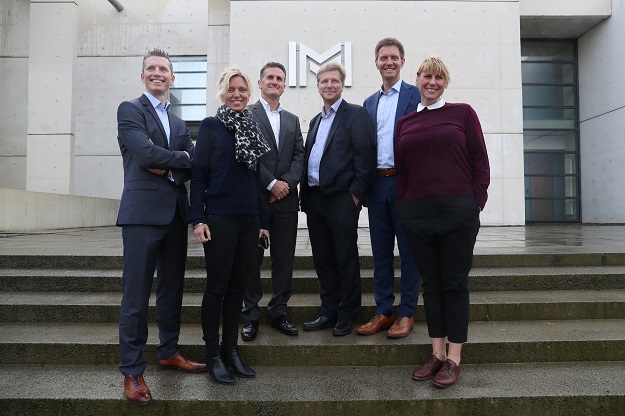Related Articles
Look beyond the money to ensure everyone profits
A ‘higher-ambition’ culture in a company can improve its long-term prospects, as well as benefiting society.
*originally published in January 2019.
A cynic might say that an easy way of understanding history is to ask: “Who profited?” Behind every event, every movement, every societal sea change, someone has inevitably pulled strings behind the scenes and profited off it.
‘Follow the money’ is the dogma for journalists who recognise that wealth accumulation is a primaeval motivation. For chief executives, following the money has also become dogma, articulated as ‘generating shareholder value’. This singular focus creates a Darwinian marketplace where anything other than the relentless pursuit of revenue is perceived as irrelevant – all’s fair in love, war and profit.
This approach has the benefit of simplicity. It also doesn’t work. Business history is replete with cautionary tales of organisations that got caught up in short-term profit-maximising hubris – think Enron – and suffered inevitable consequences in employee wellbeing, management ethics and customer trust.
The 2008 financial crash dramatically exposed this philosophy. But some organisations survived those bleak times and continue to thrive. Many illustrate a common thread: they pursue ‘higher ambition’, aspiring to bring about a positive impact on society while accumulating profit in a sustainable manner.
.
.
Higher-Ambition Leadership

The concept of ‘higher-ambition leadership’ was first coined by a global team of researchers in Harvard and Sweden studying the actions and behaviours of leaders after the financial crash. It refers to a leadership mentality that simultaneously focuses on creating long-term economic value for the organisation, while also generating societal value. Its real purpose is to build organisations that are robustly sustainable over the long term.
Traditional ‘corporate social responsibility’ (CSR) initiatives – no matter how well intentioned – don’t capture the higher ambition mindset. They also miss the point; while corporate social responsibility is good for our conscience, higher-ambition leadership is good for business.
An original higher-ambition poster child is Peter Sands, chief executive of Standard Chartered Bank between 2006 and 2015. When he joined the bank it was languishing – ‘bleeding money’ according to Sands. The first steps he took were traditional: rationalising its portfolio and markets.
But during this ‘crisis’ moment, Sands also took the time to review Standard’s many charitable activities. He came across a campaign combatting preventable blindness and set the bank an ambitious goal: to raise enough money to save the sight of 28,000 people, as the bank had 28,000 staff.
By eliminating lots of small-scale initiatives and focusing around a coherent, meaningful and longer-term objective, within a couple of years the bank had a remarkable impact, restoring the sight of 2.5 million people and reaching another 7.5 million through preventable care.
The impact of the programme on the bank was profound. Having demonstrated the impact of setting lofty ambitions and a clear long-term strategy, Sands proceeded to apply the same principles to the bank’s business objectives.
He prioritised the development of a truly collaborative cadre of managers who focused on long-term growth and sustainability rather than short-termism. Trust and autonomy were given to these local leaders, incentives were decoupled from quarterly profit and silos were dissolved; managers who wouldn’t collaborate departed. When the crash hit, customers seeking stability gravitated to Standard.
With so many economists now predicting that another global downturn is inevitable, how many organisations are still just searching for a boost in this year’s earning? If a crash came tomorrow, how sustainable is your organisation?
.
.
The pathway towards a higher-ambition

A challenge for higher-ambition leaders is striking the right balance in allocating resources to create both social and economic value. While such objectives will sometimes be mutually reinforcing, on occasions leaders need to be brave and bet their chips. Whatever the ultimate priority may be, the trick is to be explicit with stakeholders about the choices that are being made and the rationale behind them.
Hiring is another lever for higher-ambition leaders. Encouraging employees to effectively work to both social and economic targets can be difficult; recruiting leaders who have worked in both contexts in the past can provide a short-cut.
Unsurprisingly, the most fundamental requirement to enable a higher-ambition culture is for senior leaders to embody the change: making decisions that may seem risky in the short term but play into a long-term, sustainable vision of organisational growth and positive societal impact.
The pursuit of short-term profit and cashflow are essential goals for day-to-day business survival. But as raisons d’être in and of themselves, they are self-defeating – ultimately imperilling connection to the hearts of customers and staff alike.
Higher-ambition leadership, in the end, provides a deeply held philosophy that a company can mobilise around – maintaining one eye on long-term organisational sustainability, and the other on the impact that our companies have on the world around us. It connects strategy to people and creates organisational purpose that can have a motivational impact.
The next time you discuss a new business plan or strategy with a cynical colleague who asks, ‘who profits?’ wouldn’t it be nice to be able to reply with a single word: ‘everyone’.





